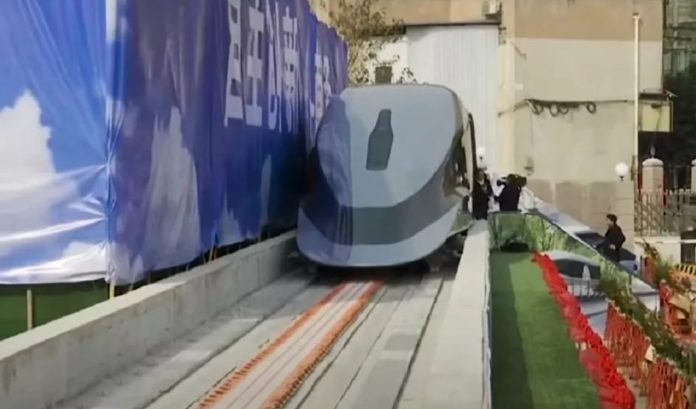China has presented a new prototype of a Maglev-type train (magnetic levitation transport), capable of reaching speeds of up to 620 kilometers per hour.
Researchers from Southwest Jiaotong University presented their work on a 165-meter test track located in the city of Chengdu, in southwest China. The maximum speed of the train is probably the fastest of all vehicles on the ground and is close to the speed of some airplanes, local media report. However, developers are working to extend it to 800 kilometers per hour.
China already has the world’s fastest commercial magnetic levitation service, Shanghai Transrapid, which operates with a top speed of 430 kilometers per hour and was opened in 2002. However, the new Maglev train is part of an ambitious plan by Beijing to create even faster connections between Chinese cities.
The new project will be based on superconducting technology, the developers say. Superconductivity occurs when electrical resistance approaches zero while cooling to very low temperatures. The superconducting state would be the key to supporting faster and more efficient Maglev vehicles, the specialists explain.
The Chinese project would be a serious rival for a magnetic levitation line that is planned to open in Japan between Tokyo and Nagoya in 2027. However, the Chengdu researchers say their technology will be much cheaper since it does not use helium like its counterparts. Japanese to achieve the low temperatures needed to create the superconducting state.
- Scientists in Fear of This New Predator From Red Sea Eating Native Species in Mediterranean
- Does This Mean We Stopped Being Animal and Started Being Human Due to ‘Copy Paste’ Errors?
- The One Lifestyle Choice That Could Reduce Your Heart Disease Risk By More Than 22%
- Aging: This Is What Happens Inside Your Body Right After Exercise
- Immune-Boosting Drink that Mimics Fasting to Reduce Fat – Scientists ‘Were Surprised’ By New Findings
“Liquid helium is very expensive. Here we achieve superconductivity at a slightly higher temperature by using liquid nitrogen, and that reduces the cost to one-fiftieth,” explains Deng Zigang, a researcher at the Key State Laboratory for Traction Power at Southwest Jiaotong University, quoted by The South China Morning Post.
In addition, the Chinese prototype uses carbon fiber and weighs about half the weight of its high-speed train counterparts.
The estimated cost of building a new magnetic levitation line, meanwhile, would be between $ 38.65 to 46.41 million dollars per kilometer, compared to $ 31 million per kilometer for the railroad tracks of a high-speed train, according to Wu Zili, the team’s senior engineer.
The researchers admit that there are still problems to be solved before the new technology becomes commercially viable, noting that the process could take about six years.
